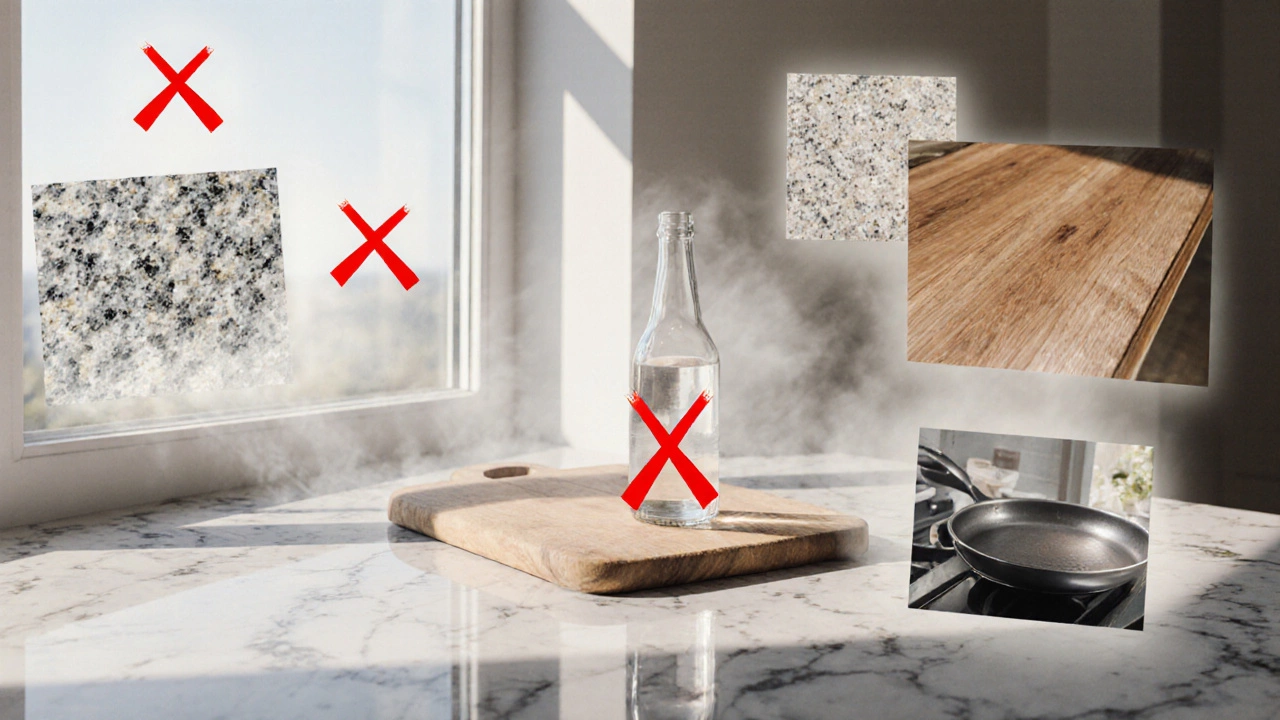Surfaces Not Safe for Vinegar – Avoid These When Cleaning
When working with surfaces not safe for vinegar, materials that can be damaged by the acid in vinegar. Also known as vinegar‑unsafe surfaces, it includes stone, wood, paint and electronics that react poorly to acetic acid.
One of the biggest culprits is marble, a calcium‑rich stone that etches when exposed to acids. The same goes for granite, another natural stone that can lose its seal and develop dull spots. Vinegar unsafe surfaces include marble, granite, and hardwood floors, and the relationship is simple: acid reacts with calcium or finish, causing discoloration or weakening. Hardwood flooring, especially when waxed or oil‑treated, suffers from “vinegar burn” that looks like water spots but is actually chemical damage. Paint‑coated walls and cabinets can lose sheen or develop bubbling patches because the acid breaks down the binder. Even electronics—phones, remote controls, and LED screens—should never meet vinegar; the liquid can corrode circuits and ruin screens. These examples illustrate the triple: vinegar harms stone, vinegar harms wood finishes, and vinegar harms painted surfaces.
Why Vinegar Can Harm Certain Surfaces
Understanding the chemistry helps you avoid costly mistakes. Vinegar is about 5% acetic acid, which is strong enough to dissolve calcium carbonate in marble, convert lime‑based sealants into soluble salts, and strip protective wax layers from wood. The predicate here is “causes etching,” and the object is the surface material. For granite, the acid attacks the resin seal, creating a porous spot that later attracts stains. Hardwood floors rely on a finish—polyurethane, lacquer, or wax—to keep moisture out; vinegar seeps through, softening the finish and leaving a milky ring. Paint films, especially latex‑based, contain binders that break down under low pH, resulting in flaking or loss of color. Electronics have metal contacts and delicate coatings; even a small amount of acid can start oxidation, leading to failure. Knowing these links lets you match the right cleaner to the right job.
So, what’s the safe route? Switch to neutral or mildly alkaline cleaners like Dawn dish soap, which is gentle on stone and wood while cutting grease. For stubborn grime on stone, use a pH‑neutral stone cleaner or a specialized granite polish. Hardwood floors respond well to a mix of warm water and a few drops of mild soap, followed by a dry microfiber swipe. For painted surfaces, a simple solution of warm water and a dash of dish soap does the trick without compromising the paint. Electronics should only meet a barely‑damp cloth with distilled water or a screen‑safe cleaner. By pairing the appropriate alternative with each material, you keep the surface intact and the cleaning effective. Below you’ll find a curated list of articles that dive deeper into each surface type, tool recommendations, and step‑by‑step guides to keep your home spotless without the vinegar backlash.

Surfaces You Should Never Clean With Vinegar - Risks & Safe Alternatives
Learn which surfaces can be damaged by vinegar, why the acid reacts, and safe alternatives for stone, wood, metal, painted walls, screens and more.
Read More